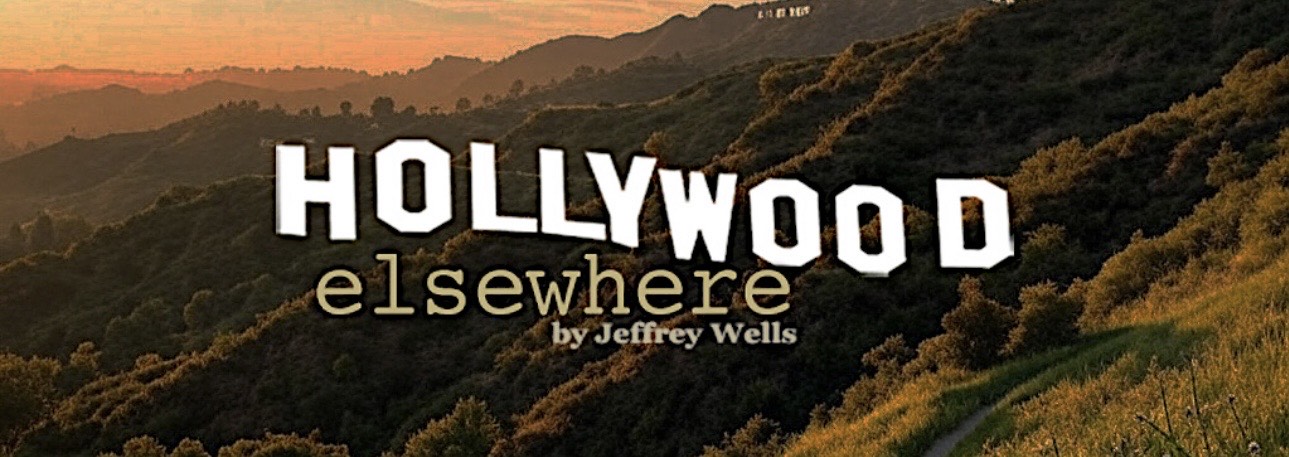I haven’t written until now about the financial convulsions hitting the visual effects industry because I have mixed feelings. I feel badly for any reputable VFX company that’s getting shafted by the Hollywood big-boy fraternity. But on the other hand (and I realize how twisted this sounds on a practical, fair-minded level) I hate conspicuous CG, and therefore feel only a certain kind of sporadic, case-by-case-basis love for those technicians who deliver more subtle work. Either way the CG industry has helped to dumb mainstream movies down over the last 20 years, and who feels good about that?
I honestly feel that CG options have in a sense become the worst all-time influence upon films, filmmakers and financiers in the history of the film industry. The cheapest, most mind-numbing slop has come out of the expansion of the CG mentality over the last 20 years, and by the CG options made available through the hundreds of VFX outfits operating worldwide.
CG is obviously indispensable to the health of the film industry. I’m not not a radical Luddite and therefore am not against any tool that might enhance the experience. But it’s the musician, not the instrument. I love CG realms when guys on the level of James Cameron are running the show but I frankly found the visual atmosphere in Ang Lee‘s Life of Pi to be exquistely fake and paintboxy. Richard Parker looked like an immaculate CG beast from start to finish, and when I know I’m looking at a hard-drive creation my eyes glaze over. To me the words “directed by Joseph Kosinski” are a major threat, and almost all CG is the same unless it’s rendered by someone with exceptional vision like Cameron or David Fincher or Steven Soderbergh or Flight‘s Robert Zemeckis. Or anyone who understands that CG needs to be invisible or seamlessly blended with reality as much as possible.
Should VFX outfits receive fair or ample compensation for quality work? Of course. Is Hollywood management constantly trying to chisel them down, in part by turning to overseas outsourcing? So I’ve read. Is it getting harder and harder for VFX outfits to turn a decent profit given astronomical research and development costs? Yes. Did Life of Pi director Ang Lee say last weekend, “I would like [VFX] to be cheaper”? Yup.
So yeah, I feel badly for the VFX supervisors and their employees grappling with what everyone is describing as a dire financial situation. But at the same time a voice is saying the following: “You guys are just servicing the Hollywood creatives with your CG effects and therefore shouldn’t be blamed for often making my moviegoing experiences feel degraded, dumbed-down and miserable. The VFX industry is going through a tough period and I’m sorry. I know how it feels to be squeezed and gasping for air. And it’s not logically fair, of course, to blame skilled technicians for simply delivering a service for their employers. But in the same sense is it wholly unfair to suggest that South American growers of coca plants and the Middle Eastern growers of poppies (along with the overseas refiners of same) share at least some responsibility for drug addiction in the U.S.? Are you going to tell me that CG isn’t a form of dope?”
VFX guys are just trying to do the best work they can and pay their bills, of course, but they’re nonetheless supplying the know-how that is making at least half of the movies these days feel like animated phony-baloney.
During last Sunday’s Oscar show I felt badly for Rhythm & Hues and Life of Pi VFX supervisor Bill Westenhofer when his remarks about his company’s recent Chapter 11 filing were “played off” with the Jaws theme. (And then his mike was killed.) But Westenhofer’s previous credits include Speed 2: Cruise Control, Mouse Hunt, Elf, The Rundown, Stuart Little 2, Men in Black II, Cats & Dogs, Along Came a Spider, Frequency, Stuart Little and Babe: Pig in the City. I hated every one of these films, in part because of their use of CG-that-really-looks-like-CG.
So basically I feel (a) let’s all stand up and demand justice for CG companies who are struggling to stay afloat, (b) VFX suppliers who are exceptional at what they do deserve to be commended for pushing along a new digital art form, and they certainly deserve to be fairly compensated for their work, but also (c) fuck these guys for helping to kill the sense of tangible, recognizable reality that one absorbs in mainstream movies these days.
Here’s a SlashFilm posting of a “brief outline of the state of the VFX business, condensed in part from one VFX industry employee’s account on Reddit”:
* Studios and production companies want VFX work done quickly and cheaply.
* Those companies don’t only pressure VFX houses to work for less, but to do more work for that ever-smaller amount of money.
* That results in long hours for VFX artists, with overtime not covered in contracts.
But at the same time, studios are doing two things:
* Outsourcing jobs to countries such as China and India, who will do the work more cheaply
* Taking bids from companies in locations that offer tax breaks. But the tax break goes to the studio, not the effects house.
This creates a demand for cheap, young labor, and an environment where companies have no leverage with studios, and VFX employees little leverage with their effects house — they can be replaced.
Profit margins at VFX companies have grown very thin. Some companies can only pay workers for their last job by taking on a new gig. Other companies close divisions (Hugo FX house Pixomondo did this) or lay off dozens to hundreds of employees (Digital Domain and R&H).







